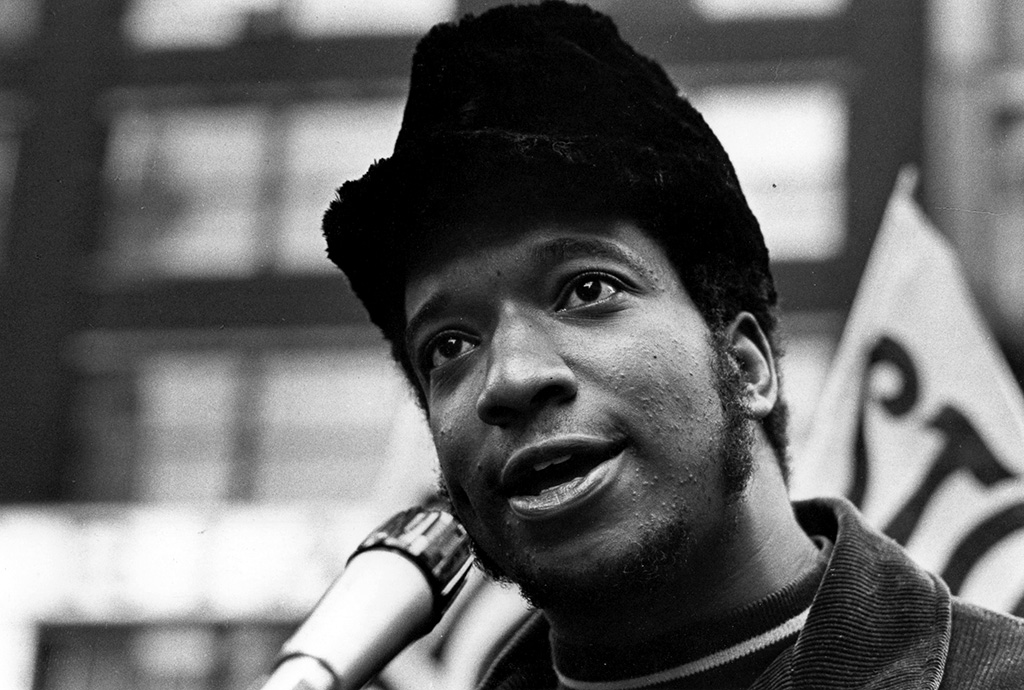Memorializing the Black Panthers

Interesting project here on Chicago activists creating a historical memory project for the Black Panthers work in that city, which most notably included Fred Hampton, assassinated by J. Edgar Hoover’s thugs.
The walls of the Church of the Epiphany in Chicago are two feet thick, made of red-brown sandstone from the upper peninsula of Michigan. Designed by Francis Whitehouse and listed on the National Register of Historic Places, it’s a preeminent example of the Richardson Romanesque architectural style. The ornate floral masonry detailing on its facade bears witness to its costly construction: Upon opening in 1885, it was the most expensive building the Protestant Episcopal Diocese of Illinois had ever built, surrounded by affluent neighbors in the city’s West Loop neighborhood.
But by the 1960s, it had a different constituency. Then informally called the People’s Church, the building was an organizing hub for the Illinois chapter of the Black Panther Party. There, members of the revolutionary civil rights group hosted free meals for children and led classes, meetings and rallies — including chapter chairman Fred Hampton’s last speech before he was shot by police in December 1969.
The feeling of sanctuary behind these engine-block thick walls was more than metaphorical: The Panthers felt the Chicago police, who had raided their headquarters, would not break down the doors of a church. It was “liberated territory,” said Black Panthers’ Illinois chapter co-founder Bobby Rush, who later represented Chicago in Congress for 30 years. “We felt safe there.”
The storied church — known today as the Epiphany Center for the Arts, a multipurpose art and events center — is now part of a unique historic preservation project. It’s one of dozens of Chicago-area properties associated with the Black Panther Party that have been listed in a National Register of Historic Places Multiple Property Document. The designation defines the broad history and cultural context of the Black Panthers in Illinois, so that additional Black Panther sites can eventually be added to the historic register or have their status updated, like the Church of the Epiphany, which has had its National Register nomination updated with the history of the Panthers.
Spearheaded by the Historical Preservation Society of the Illinois Chapter of the Black Panther Party, the listing was approved by the state of Illinois and the National Park Service in December. That in itself is a landmark of sorts: It’s the first time the Panthers’ history and significance in the built environment has been recognized by the federal government in a Multiple Property Document.
The preservation society was created by Billy Brooks, one of the founders of the Illinois chapter, and Leila Wills, whose parents were Panthers. Not trained as a historic preservationist, Wills took on a tough job. Many primary sites associated with the party have been demolished, including its West Side and South Side headquarters, medical clinic, and the Monroe Street building where Hampton and fellow Panther Mark Clark were killed. Over the last several years, Wills had to not only learn the workings of the local, state and federal landmarking apparatus, but also bring along a community of people not disposed to trusting the government.
The historiography on the Panthers has been somewhat problematic over the years. It started with the early books on the civil rights movement often looking askance at organizations like this that. These were often very much from a liberal perspective. Then more leftist historians began to almost idolize the Panthers, which was equally problematic. Yes, the social programs were good but let’s not forget that some of these dudes were pretty bloody problematic. We seem to be finally moving into more measured and nuanced discussions of the movement, which I hope pan out.
My second point is to note the divide in this country between people whose emphasis on historical memory is about memorializing groups like the Panthers while on the other side, you have Ron DeSantis trying to deny that slavery was a bad thing and making it illegal to say that in public schools. We can tell so many stories about history and there isn’t a single “true” one per se, though there are more true and less true and outright false, for which the evidence is the documents. The stories we choose to tell are always much more about the present than the past. And today, there is an unprecedented market to tell stories that challenge the centrist unifying histories of this nation and highlight the many terrible histories here at the exact same time that right-wingers are trying to deny it all. It’s quite fascinating from a clinical perspective. Obviously, my heart, brain, and pen are with those highlighting the horrors of our history. But also this all says a lot about domestic society in this country today.


